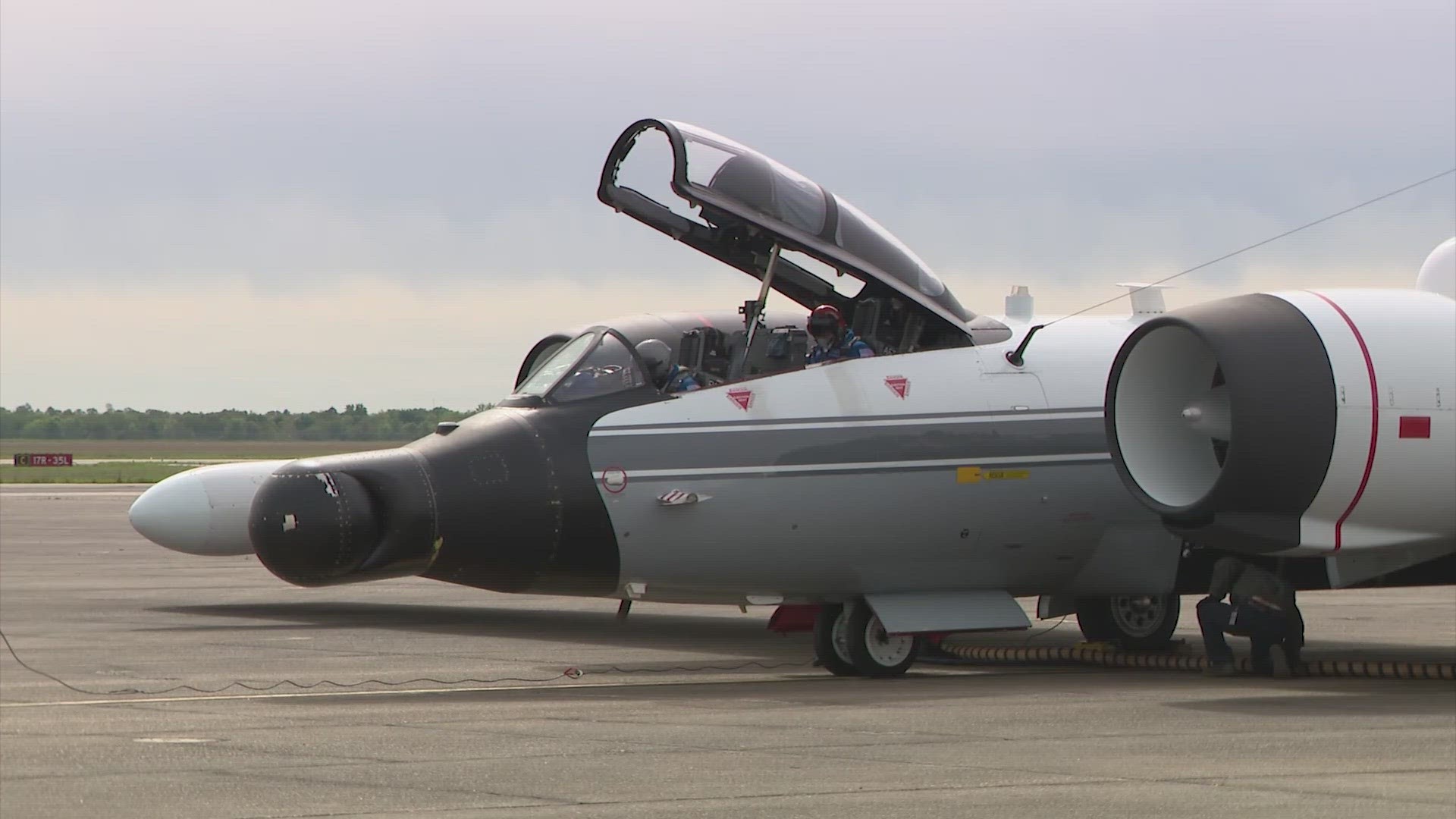HOUSTON — The upcoming solar eclipse is an opportunity to learn new things about the sun and the universe in which we live. So much excitement will take place during the total solar eclipse.
There are only three WB 57s left in the world and NASA will be flying two of them during the solar eclipse out of Ellington Field. WB 57s are special and used for these experiments because they can fly above most of the atmosphere. They’ll fly between 50,000 and 60,000 feet and follow the path of totality. At that altitude, there isn’t as much dust or dirt to diminish the quality of imagery so scientists can see infrared light from the sun that you can’t see from the ground.
The physiological impacts on the pilot and the NASA SEO -- sensor equipment operator -- require them to wear a special suit and be on 100% oxygen. To fly over 50,000 feet, they have to be on 100% oxygen so they don't get hypoxia and pass out.
During the eclipse, the coordinates and timing have to be perfect so the planes can follow the exact position of totality.
KHOU 11 Meteorologist Chita Craft spoke with Amir Caspi who is a Solar astrophysicist.
"The shadow moves at about 1,500 mph at its slowest and the airplanes are moving at only about 460 mph, so the shadow will overtake them pretty quickly. But as long as you know all of those things, you can put the math together and you can plan for trying to be at a particular place."
RELATED: Here's why NASA is launching sounding rockets into the moon's shadow during the April 8 eclipse
Four cameras on the nose of one WB 57 are looking at it in special colors or wavelengths.
Of light from visible light -- which is what we see with our eyes -- all the way down to a region of light we call the mid-wave infrared, which not only can we not see it with our eyes, but we can't really measure it very well from the ground because the atmosphere emits and absorbs those wavelengths of light.
In fact, for the mid-wave infrared camera, where we're going to get some of the most important discoveries, that camera actually has a cooler on it that gets it down to really, really cold temperatures of something like -150° Celsius.
With the special technology, they will be able to see much clearer images of the sun to try and understand its complexities and how it interacts with the Earth and outer space.
No matter if the clouds are present or if the weather at the surface is bad, NASA will be fine with the instruments at their disposal.

